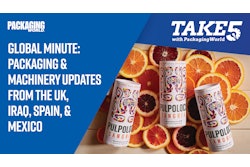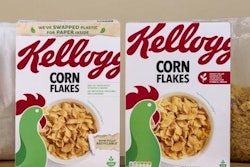A partnership between the Ellen MacArthur Foundation and the United Nations Environment Program has challenged companies and brands to change the factors that lead to plastic packaging pollution with an aggressive goal date of 2025. It is an opportunity at giving a common vision for how we advance solutions in this space.
There are many different options that brands, and their suppliers, are implementing to reduce waste and drive circularity into the supply chain. Consumer education and changing human behavior linked to the way we interface with refuse is critical. The system we have in place today to handle recycling could use a facelift and educational campaign to assist consumers with better understanding of their part and how it works in its entirety. Public willingness and participation are present. But non-uniform practices, the lack of information, and insufficient guidance has created an expensive path to landfills, and has driven mistrust for our system within U.S. homes.
Engineering and providing alternatives only work if humans understand how to handle those materials and keep them within the intended system. Programs like How2Recycle are leading the way but more effort is needed to teach brands and consumers.
Consider the total supply chain
We need to ensure that sustainability expands beyond the bounds of engineering a solution on the backend, and incorporates the efforts made throughout the entire supply chain to reduce our carbon footprint. Think of a large storybook as an analogy for sustainability. Often, we simply flip to the middle of the book and pick a page, in this case the engineering option for a particular material or package. Many times, we neglect to gather the data from the total supply chain, the pages before and after that capture a very important part of the story.
Most manufacturers have implemented energy-, water-, and waste-saving programs to protect the environment and enhance their operations. This is all usable in a sustainability statement made by a brand. Additionally, there are some inherent eco-friendly statements that can be made about different conventional materials selected by brand owners. There are also different choices for how waste is handled. Finally, recycling, composting, biodegradation, and upcycling all have potential.
Critical to solving waste issues is ensuring that we are focused on the right offender. Food waste is the biggest contributor to greenhouse gases. Food is disposed of in a landfill, and it rots and becomes a significant source of methane, a potent greenhouse gas with 21 times the global warming potential of carbon dioxide. Packaging is intended to protect food and extend its usable life. We need to be careful to select the right options when making choices about packaging. Sometimes, conventional materials are the best method to avoiding unwanted food waste. There are alternative waste stream management systems available, such as TerraCycle, to address conventional materials. They are also part of the storybook referenced earlier.
Go beyond the marketing
At the heart of the matter is the Earth. Sustainability and eco-friendly packaging need to be more than a marketing campaign to appease public opinion. To protect it, we need to educate and change human behavior. We need to make sure that we are focused on telling the entire story as it relates to sustainability statements. We need to focus on the top offenders and ensure we are selecting the most sensible options to make the largest impact.
There are many options available and new technologies are still emerging. Working together, we will succeed in meeting our environmental goals.
The author, Tom Seymour, is Business Development Specialist at Bison Bag Company and an IoPP Certified Packaging Professional. Tom also serves as Vice Chair on the IoPP Board of Directors. For more information on IoPP, please visit www.iopp.org.

























